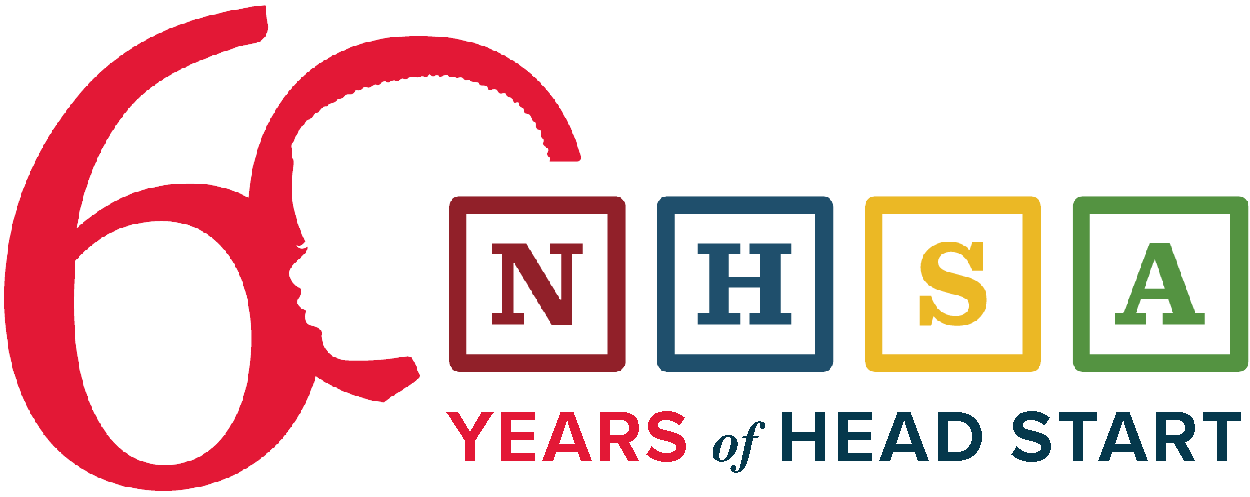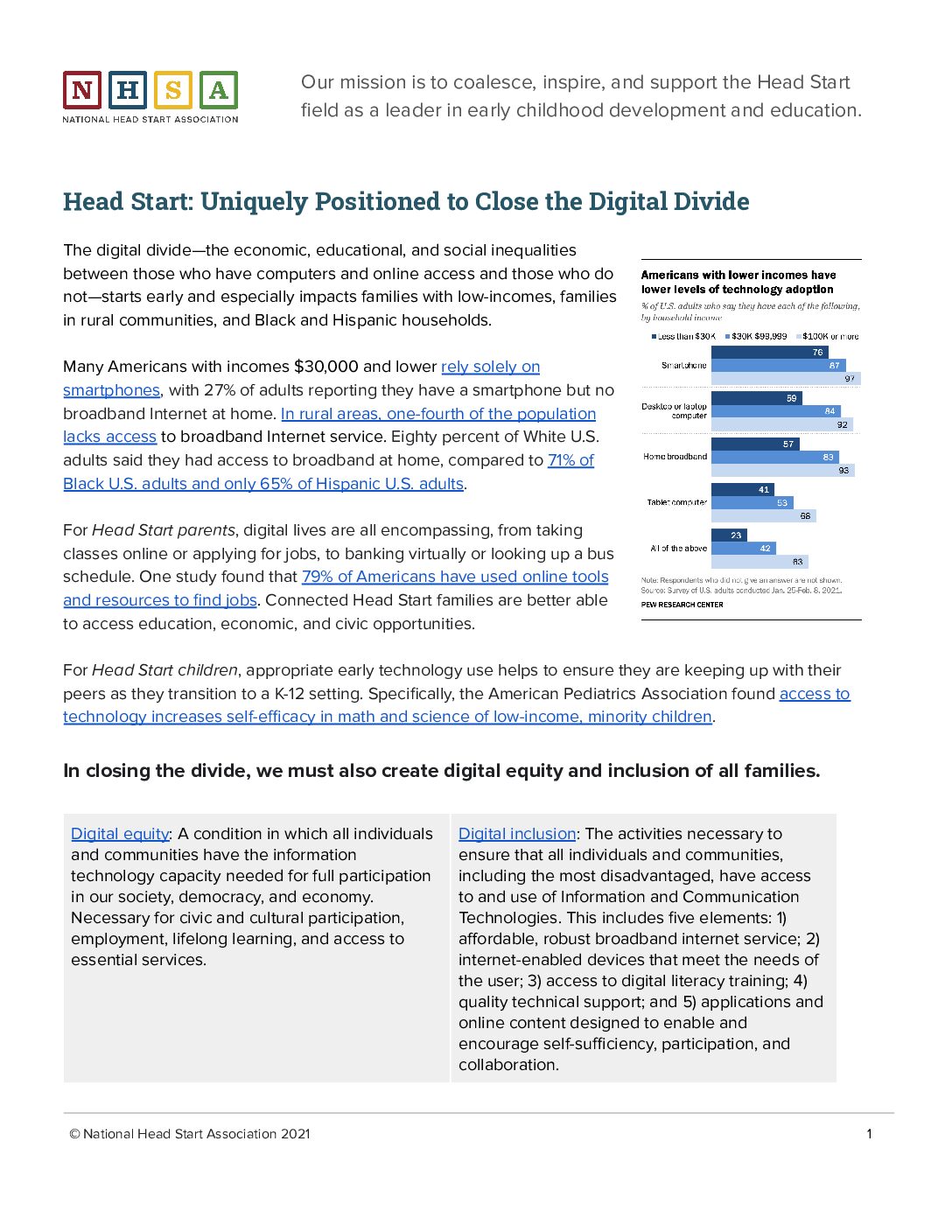The digital divide—the economic, educational, and social inequalities between those who have computers and online access and those who do not—starts early and especially impacts families with low-incomes, families in rural communities, and Black and Hispanic households. Digital equity is when all individuals and communities have the information technology capacity needed for full participation in our society, democracy, and economy.
Creating Digital Equity and Inclusion for All Families
Many Americans with incomes $30,000 and lower rely solely on smartphones, with 27% of adults reporting they have a smartphone but no broadband Internet at home. In rural areas, one-fourth of the population lacks access to broadband Internet service. Eighty percent of White U.S. adults said they had access to broadband at home, compared to 71% of Black U.S. adults and only 65% of Hispanic U.S. adults.
For Head Start Parents
Digital lives are all encompassing, from taking classes online or applying for jobs, to banking virtually or looking up a bus schedule. One study found that 79% of Americans have used online tools and resources to find jobs. Connected Head Start families are better able to access education, economic, and civic opportunities.
For Head Start Children
Appropriate early technology use helps to ensure they are keeping up with their peers as they transition to a K-12 setting. Specifically, the American Pediatrics Association found access to technology increases self-efficacy in math and science of low-income, minority children.

